
Courtesy of Jose Avila

Audio By Carbonatix
Crouching over a brick-lined pit dug into the dirt at the edge of an urban vegetable garden, using the palm of his hand to judge the heat emanating from the earth covering the opening, chef Jose Avila knows that his new cooking setup is a far cry from a standard restaurant kitchen, where thermometers and timers tell when roasts or braises cooked inside precisely controlled ovens are ready. Sealing the meat and bones of an entire sheep inside an hoyo – the name for that outdoor pit oven – leaves much more to chance.
Avila, founder of El Borrego Negro, a new weekly pop-up, doesn’t want precise control, though. He’s counting on the magic that happens when time and the heat of glowing-hot stones turn simple ingredients into something special: sheep barbacoa in the style of Hidalgo, a state near Mexico City.
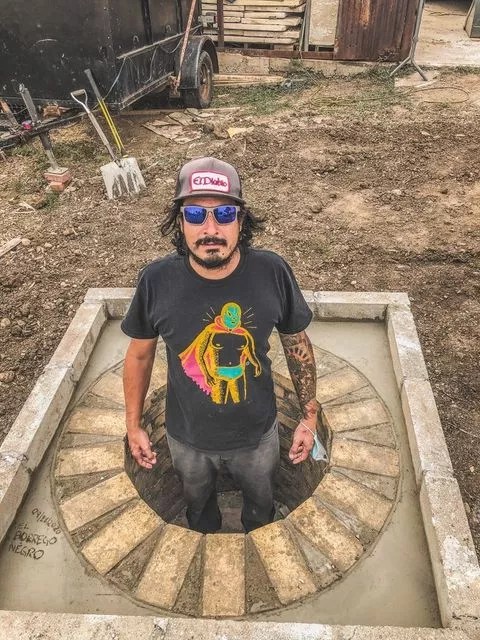
Chef Jose Avila and his hand-built hoyo at Re:Vision Westwood.
Courtesy of Jose Avila
“You seal it with mud so that absolutely nothing gets out,” Avila says of the hoyo that he and his crew of mostly Oaxacan cooks built last month at Re:Vision Westwood, at 3800 Morrison Road. “And you pray to the gods that whatever is happening inside the oven is the right thing.”
What’s happening inside the hoyo is that maguey-wrapped meat cooking slowly overnight, dripping fat and juices into a massive stockpot of consomé de borrego, a brothy soup made with sheep bones, chiles, garbanzo beans and herbs.
“I’m from Mexico City, but my grandmother was from Tezontepec, which is halfway between Mexico City and Tulancingo in Hidalgo,” Avila explains. “I grew up seeing the markets with the ovens and the sheep, but I’ve never done [an hoyo] myself.”
Avila has been running his X’tabai Yucateco food truck for the past year, using Re:Vision’s commercial kitchen as his commissary and often selling tacos and other specialties there when he’s not set up at breweries and other locations to serve lunch or dinner. His dedication to traditional Mexican dishes and cooking techniques uncommon in Denver has already produced relleno negro (turkey or another meat cooked in a black sauce), cochinita pibil, panuchos and other food from the Yucatán Peninsula. But with his new Borrego Negro project, he’s turning his attention toward the hills of Hidalgo, where sheep are much more prevalent than in the coastal jungles.
The chef says El Borrego Negro started as an idea planted by one of his Oaxacan cooks, who grew up around wood-fired cooking (and whose first language is Mixtec, not Spanish); Avila realized that he could re-create the Hidalgo-style barbacoa of his childhood memories with a little Oaxacan ingenuity from his team. But two things were needed: approval from the city and a source of good meat. “I talked to Re:Vision, and we agreed that it would be beneficial for everyone” to set up the barbacoa pop-up there, Avila says. “And then I talked to the fire department and the health department.”
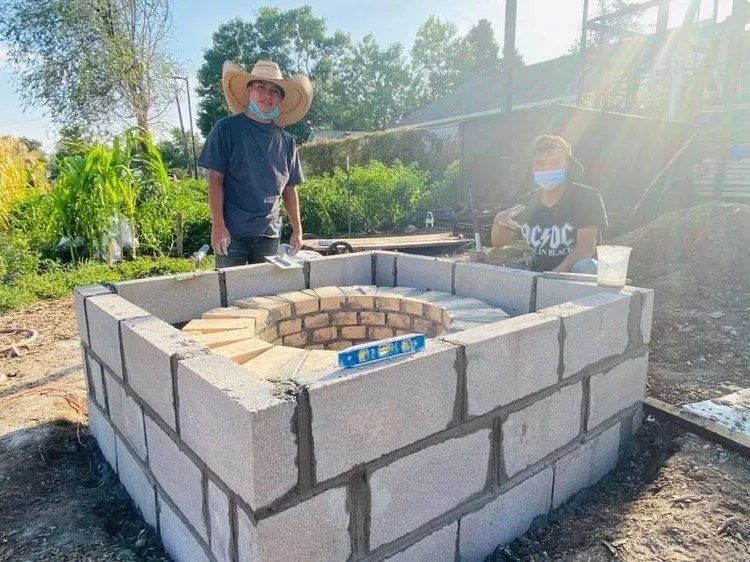
Jose Avila gets help building his brick oven earlier this year.
Courtesy of Jose Avila
With approval from both, he turned to a friend with a ranch and slaughterhouse in Wellington. “We ended up getting 24 Targhee sheep; they’re a good size and perfect for winter weather in Colorado,” Avila notes. The sheep were purchased at auction and now reside on the ranch in Wellington.
Avila and his crew then got to work building the hoyo, purchasing bricks and cement to line the pit – which at about three feet deep is shallow compared to the hoyos at indoor/outdoor restaurants in Hidalgo. A square concrete pad with a wooden frame surrounds the pit at ground level, allowing the cooks to cover the hole with tarps and dirt once the meat and the pot of consomé are in place.
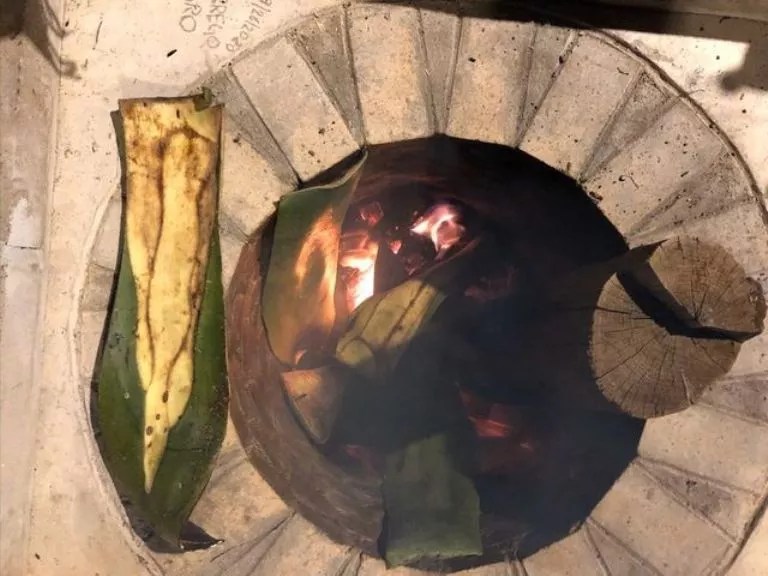
Maguey leaves from Mexico are roasted to soften them before the food is added to the oven.
Courtesy of Jose Avila
Avila’s first two attempts at overnight cooks were experiments, but now he has the procedure down. The process begins with a trip to Wellington on Saturday morning; Avila participates in the slaughter of the animal, because he wants to experience every moment of creating a finished product from a living animal. Once the sheep (not lamb, since each is about 240 pounds) is killed and butchered, Avila returns to Re:Vision to build a fire in the pit. It takes several hours for the rocks at the bottom to get red-hot, and then any large chunks of burned wood are removed. His team prepares the consomé using the bones from the previous week’s sheep along with garbanzo beans, guajillo and arbol chiles, avocado leaves, epazote and bay leaves from Oaxaca.
Before the stockpot goes into the pit, long spikes of maguey are roasted over the heat of the pit to soften them so that they’re flexible enough to line the pit’s brick walls and wrap the meat. The pot is lowered into the pit and a grate is placed on top; the meat and panza – like a giant sausage made with the sheep’s stomach – are placed on top, with a layer of maguey leaves covering everything. The pit is then sealed up so that not even a wisp of steam can be seen. The meat cooks slowly overnight, its fat and juices mingling with the juice of the maguey leaves (from the same plant that yields pulque and mezcal) and dripping into the simmering pot of consomé.
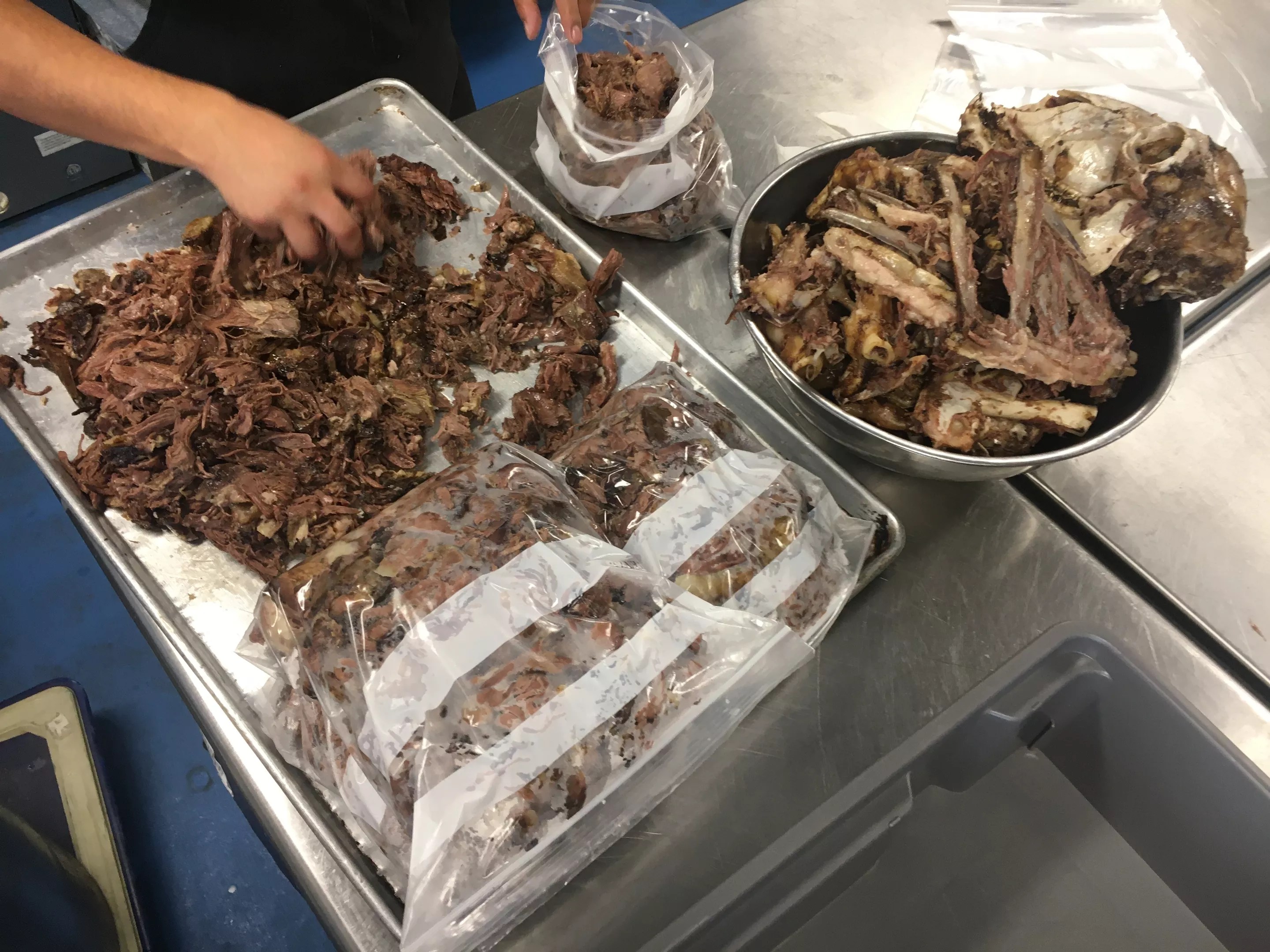
The finished barbacoa is shredded and portioned in Re:Vision’s commercial kitchen.
Mark Antonation
After the meat begins its overnight cook, Avila grinds blue corn into masa to make fresh tortillas for the upcoming feast, and his kitchen crew creates a fiery salsa verde and a slightly milder chile de arbol salsa. Come Sunday morning, those in the know will line up at the silver X’tabai Yucateco Airstream trailer to pick up barbacoa by the pound with all the trimmings.
On Sunday, November 15, $35 landed a pound of the succulent meat, a short stack of tortillas (both blue and yellow corn), a quart of the fat-slicked consomé and both kinds of salsa, along with lime quarters and chopped onions and cilantro, all packed neatly to carry home for a mid-morning breakfast of some of the best tacos you’ll find anywhere in Colorado. (Word got out fast enough that brisk Sunday morning that all 65 orders sold out.) The meat itself tastes fully of mutton, but without gaminess, and a subtle perfume reminds you that it was cooked with maguey. The consomé is unlike any soup you’ve ever had; the cloudy broth hides whole chiles and a generous amount of garbanzo beans that bob to the surface when stirred. The rich flavor of the mutton combines with the Oaxacan herbs for an intense, complex spoonful swirling with fat and bits of onion and meat from the bones. Left to cool, the consomé turns gelid and the fat on top thickens almost to candle wax.
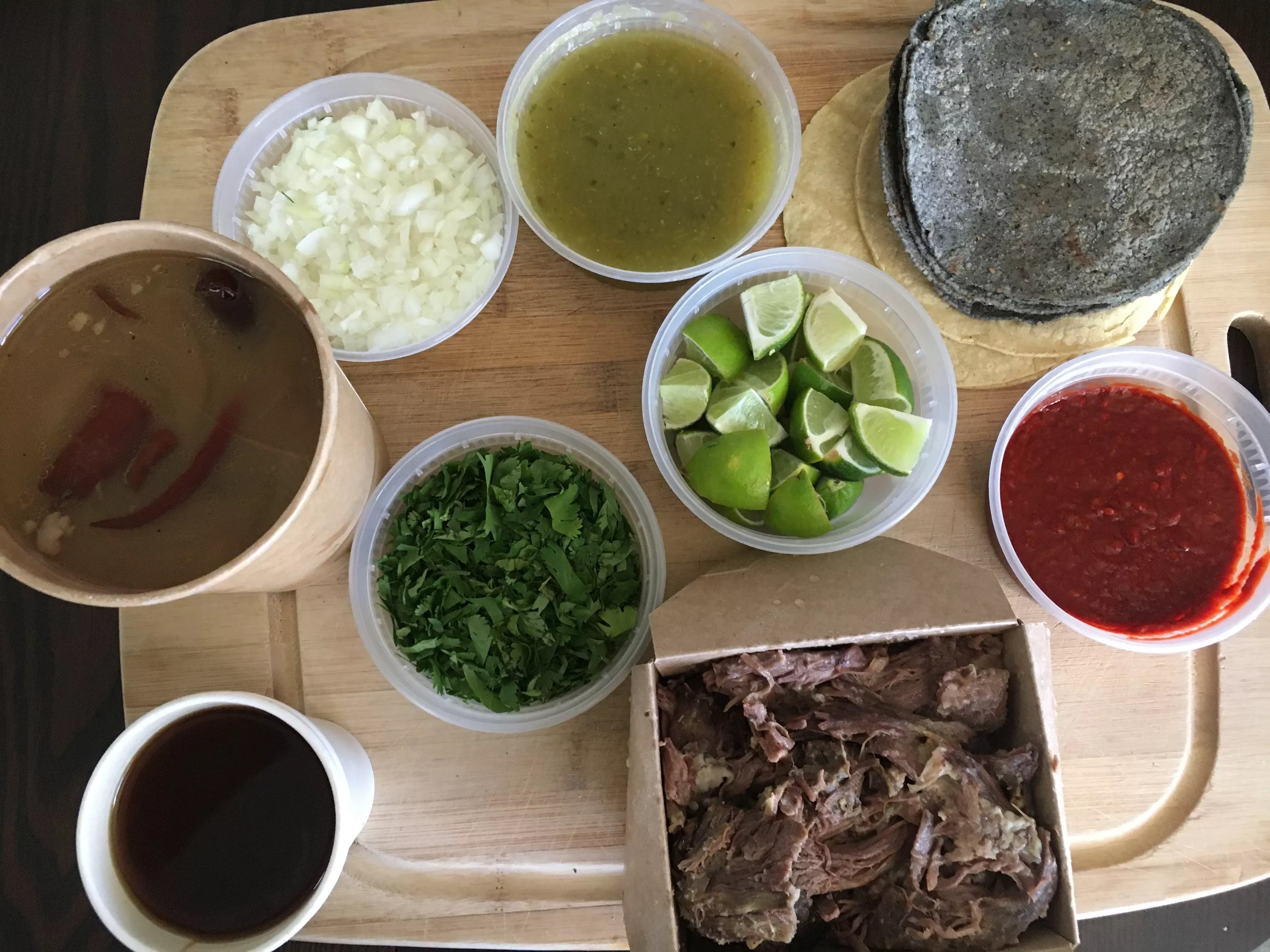
For , you’ll get enough food for big meals for four adults.
Mark Antonation
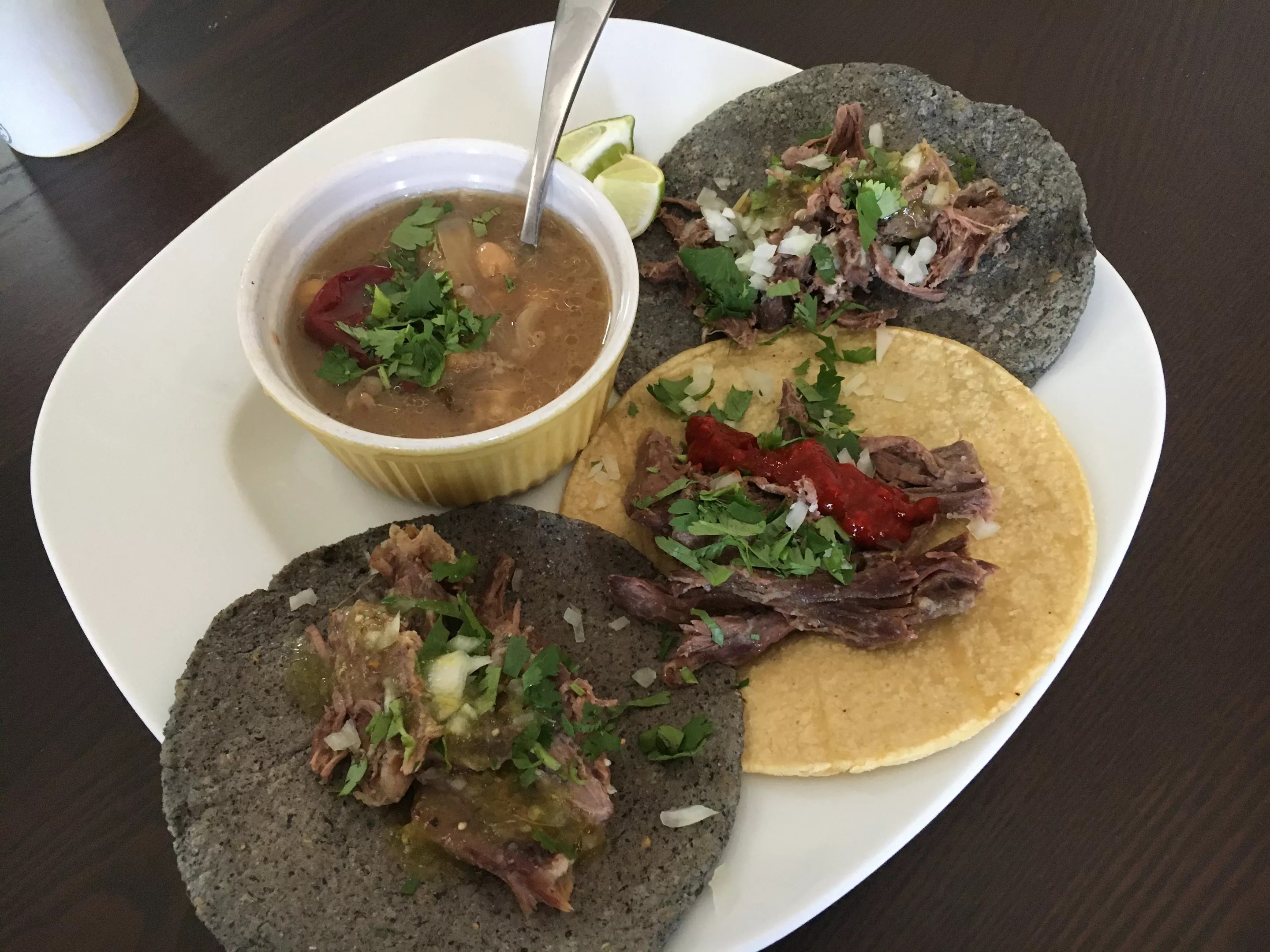
The final tacos de barbacoa assembled and served with hearty consom
Mark Antonation
Knowing all the steps that Avila took in order to make this meal possible makes every slowly savored bite taste a little more of the earth, the fire and the animal that gave its life.
According to Avila, there’s a famed restaurant in Mexico City, El Hidalguense, that re-creates the Hidalgo barbacoa experience perfectly, raising sheep and cooking them in deep hoyos for weekend visitors who don’t want to make the trek to Tezontepec. (Check out the “Barbacoa” episode of Netflix’s Taco Chronicles to see how it’s done.) Here in Denver, you’ll never taste this kind of Mexican cooking sitting at a restaurant; you’ll have to stop by El Borrego Negro for barbacoa this primal, this deeply flavorful and utterly delicious.
El Borrego Negro will be serving every Sunday morning from 8 a.m. to sell-out all winter, as long as snow doesn’t interfere, Avila promises. Cultura Craft Chocolate and Cabrona Coffee will be open at Re:Vision, so you can grab espresso drinks or traditional Mexican hot beverages such as cafe de olla, atole and champurrado to go with your feast.
Check @el_borrego_negro_ on Instagram before you go to make sure the weather and other conditions haven’t canceled the event. And get there early; last weekend Avila sold out of food by 10:30 a.m.